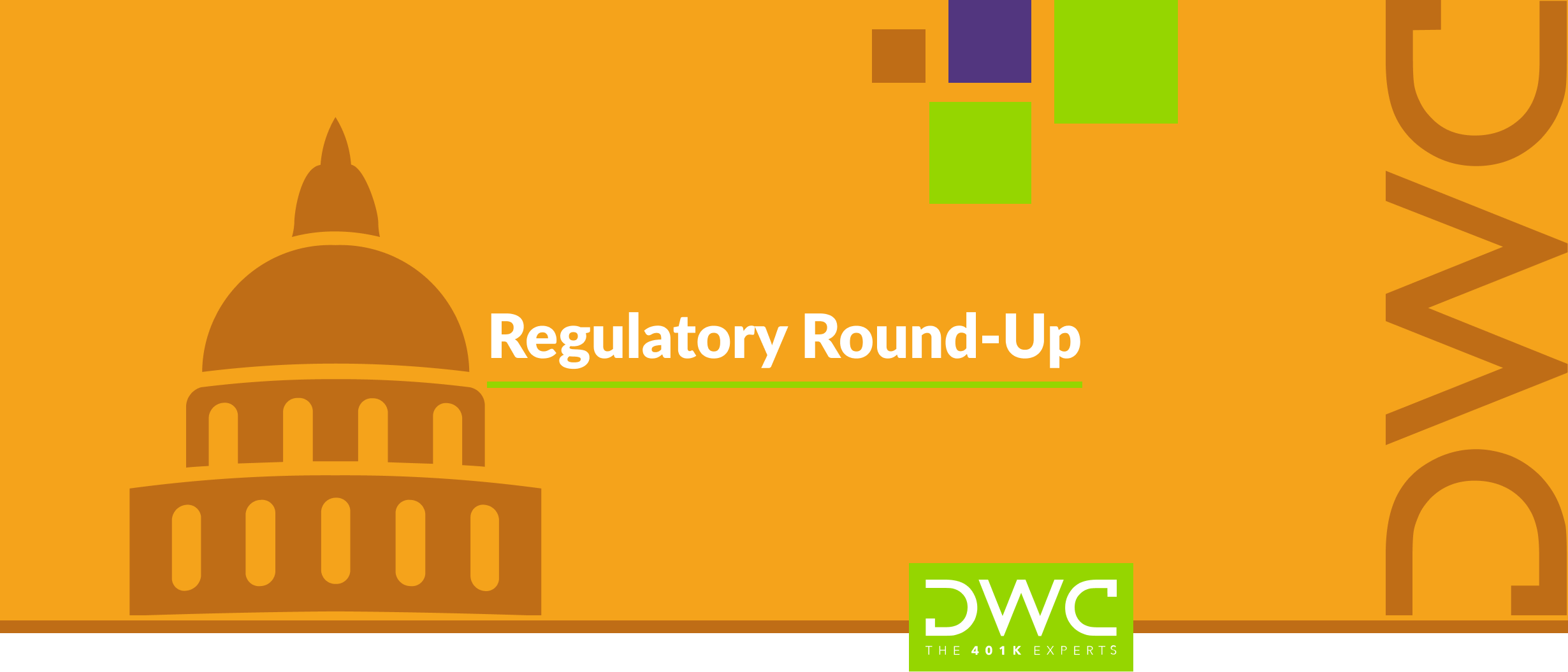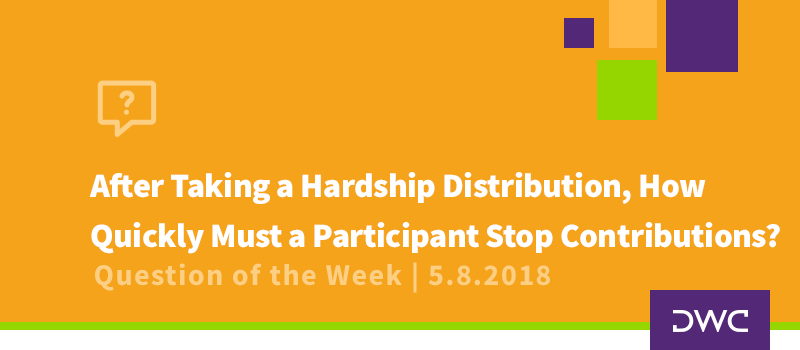ESG Isn't Dead...Yet
We are compliance geeks and not investment professionals, so it’s not often that we wade into the investment waters with our posts; however, a recent district court case out of Texas caught our attention. In Spence v. American Airlines, Inc., the Northern District of Texas found that American Airlines breached its fiduciary duty of loyalty by allowing ESG factors to be considered with respect to the investments in its 401(k) plan. That might sound like a nail in the coffin of ESG, but a closer read of this opinion shows that it was not what they did but how they did it that was the problem.
Regardless, this decision is kind of a big deal, because it’s one of the first (if not THE first) on the topic to be decided based on the merits of the actual question rather than a misstep on a procedural requirement.
What Is ESG Investing?
ESG is an acronym for “Environmental, Social, and Governance” and it refers to taking those types of factors into consideration when making investment decisions. For example, an investor may choose to invest in a certain fund or company that promotes clean energy while steering away from those in, say, the tobacco industry or that manufacture certain firearms. Those are just a couple of examples, and this opinion gives a number of others.
There are arguments for and against consideration of those factors that are more reasonable than the extremes on both ends of the political spectrum that usually make better clickbait. Arguments that might be valid when it comes to more generalized investment choices, however, take on a different light in the context of an ERISA-covered plan.
ERISA imposes certain obligations on plan fiduciaries. One is a duty of prudence, which requires fiduciaries to take a methodical approach in conducting due diligence on an investment. Another is a duty of loyalty, requiring that fiduciaries act solely in the interest of participants and for the exclusive purpose of providing retirement benefits. That duty has been cited in other Court opinions as “the highest known to the law.”
Why Is This An Issue?
The question that has been bouncing around for years now is whether a plan fiduciary violates one or both of those duties by considering ESG factors with regard to plan investments. One side of the debate says that “exclusive purpose” means fiduciaries must consider only factors that are strictly financial. The other side counters that many ESG factors impact the economy, at least indirectly, and can/should be considered as a result. Also, if adding ESG investments to the lineup encourages more participants to save, doing so is in the participants’ best interest.
The pendulum has been swinging back and forth for years, based largely on politics, which stands to at least some reason given that the Department of Labor is a department of the Executive branch. We don’t say that to take a partisan dig at anyone…it’s just the facts, and those facts are generally consistent with the overall political philosophies of the parties. Here’s a quick rundown.
| Year | President | ESG & ERISA |
| 2008 | George W. Bush (R) | No Way |
| 2015 | Barack Obama (D) | A-OK |
| 2020 | Donald Trump (R) | No Way |
| 2021 | Joe Biden (D) | A-OK |
Kinda like watching a tennis match.
What Did The Court Say?
In this case, American Airlines hired BlackRock to manage certain of the index funds in the 401(k) plan. It also hired Aon International to monitor the plan’s investment managers. The participants who brought the suit claimed that BlackRock’s consideration of ESG factors in how it voted its proxies. That caused the index funds to be managed more like ESG funds, which they claimed, violated fiduciary obligations.
Duty of Prudence
The Court looked at the two general fiduciary duties we mentioned earlier – prudence and loyalty. With respect to the duty of prudence, the Court noted that ERISA is about the process rather than the result, is “inherently comparative,” and that American’s process was in line with “prevailing fiduciary practice and standards.” Score one for American Airlines.
The judge did take the opportunity to refer to the retirement plan business as “incestuous” and basically said that all the big players being in cahoots makes any sort of comparative liability difficult. The judge pulled no punches in referring to:
“BlackRock exercising an alarming degree of control and influence over the industry and, as a result can effectively rig the process in a cartel-like manner to insulate against its removal.”
Too bad the judge was so shy about expressing his thoughts on the matter.
Duty of Loyalty
Things took quite a turn on this point. BlackRock was American’s fourth largest shareholder at the time. It also held hundreds of millions of dollars of American’s debt and managed billions of dollars in plan assets. Both companies shared a commitment to ESG investing outside of the context of the 401(k) plan.
The individual at American who oversaw the financial relationship with BlackRock on the corporate side was also responsible for oversight of the 401(k) relationship. The Court record contains instances of that person pointing out the importance of the corporate relationship between the companies and that he lied under oath about BlackRock providing certain periodic investment reports.
Let’s not forget about Aon…you know, the company American hired to monitor BlackRock. Turns out that BlackRock was also one of Aon’s largest shareholders.
The judge pointed to those things and other apparent conflicts of interest in finding that American breached its duty of loyalty “by failing to keep American’s own corporate interests separate from their fiduciary responsibilities.”
Reports of ESG’s Demise Have Been Exaggerated
On the surface, this doesn’t sound good for the proponents of ESG, but this is one of those “devil is in the details” situations (as is true in most litigation).
BlackRock was supposed to be managing index funds, not ESG funds. In fact, the opinion suggests the plan in question didn’t actually contain any funds that were overtly ESG. Had ESG considerations been limited to funds that had that as an objective, perhaps the outcome would have been different. Then there are the alleged conflicts of interest. BlackRock was known for its ESG activism, and the record includes correspondence internal to American promoting the alignment of interests between the companies. The Court noted:
“While such an alignment on ESG is permissible under ERISA when there is clear separation between corporate goals and fiduciary obligations…Defendants failed to take necessary precautions to maintain this critical divide, resulting in Defendants’ willingness to allow BlackRock to use Plan assets with little to no accountability in the pursuit of ESG investing.”
That’s why we mentioned before that it was how American applied ESG and not ESG investing in general that was its undoing in this case.
What Comes Next?
Not only are we not investment professionals, we are not attorneys either. It’s worth noting that this decision came out of a federal district court in Texas. There is one other Court for the region that is higher up the food chain – the Fifth Circuit Court of Appeals. American could appeal the decision there.
The Fifth Circuit has a reputation for two things – being pro-corporation and issuing right-leaning decisions. In fact, it has become the preferred venue for litigation against the federal government over a host of traditionally left-leaning social issues. Again, that’s not meant to be a partisan statement; it's just the facts. This case is not against the government, but it does involve some very large corporations. We mention all that only to highlight the possibility that an American win on appeal combined with a potential future decision in the other direction in a different part of the country could land the ERISA/ESG question at the Supreme Court.
Given how long it usually takes for that process to play out, the current administration could add another “No Way” stamp before we get a final answer from the Courts. In the meantime, plan fiduciaries with an eye toward ESG investing would be well-advised to proceed with caution…and be sure to keep your neck flexible so you don’t pull a muscle watching this ball continue to bounce back and forth.

















